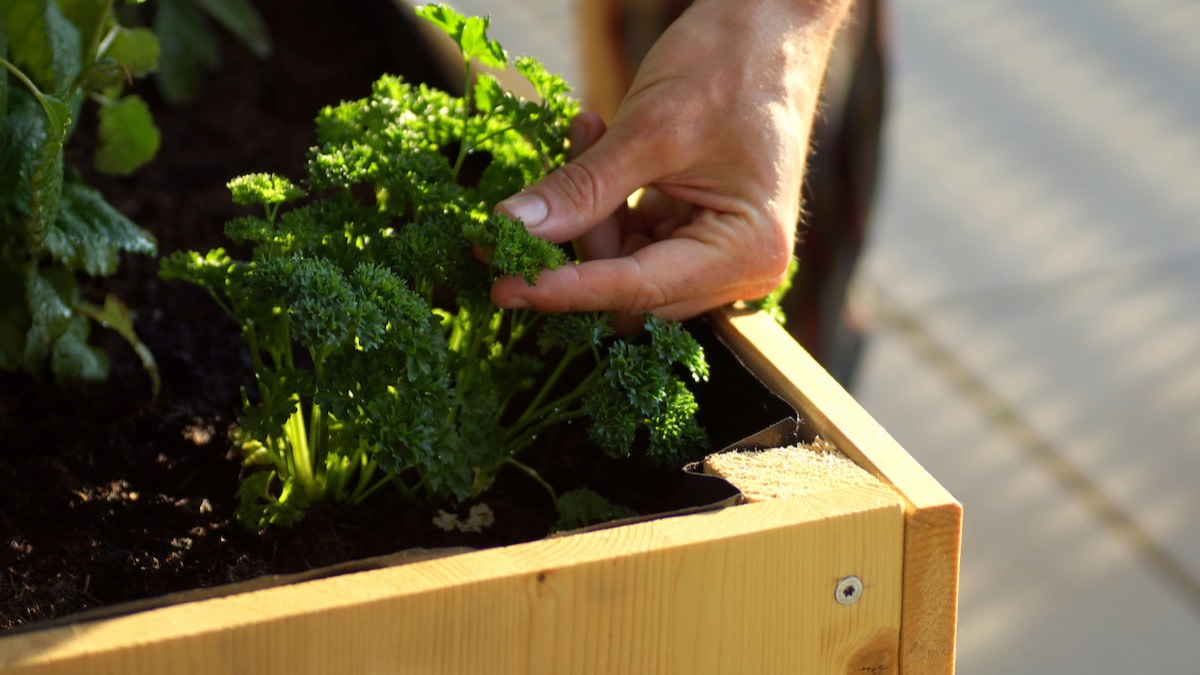How to Grow Parsley in Your Herb Garden
Written by MasterClass
Last updated: Jun 7, 2021 • 2 min read
Parsley is one of the easiest herbs to grow from seed. Whether you prefer Italian flat-leaf parsley or curly parsley, there are endless ways to use fresh parsley leaves in your cooking.
Learn From the Best
How to Plant Parsley
Parsley makes a great addition to any herb garden and—if you have the patience for a long germination time—is one of the easiest herbs to grow from seed. The two different types of parsley (Italian parsley and curly leaf parsley) can be grown the same way.
- 1. Start parsley seeds indoors. Prepare your seeds for planting a month or two before the last frost. Soak parsley seeds in water for 8 to 12 hours, then plant them a quarter of an inch deep in the soil in pots or a seed starting tray.
- 2. Allow your seeds to germinate. It may be a few weeks before your parsley seeds germinate. Keep the soil temperature at around 70°F, and ensure that seedlings get at least five hours of sunlight per day.
- 3. Transplant parsley outdoors. After the last frost has passed, you can transplant your young parsley plants to a warm, sunny location in your garden. Though parsley prefers full sun, it will tolerate partial shade in warm climates. Ensure that the soil is fertile, well-drained, and amended with organic matter such as compost. Plant seedlings eight to 10 inches apart.
How to Care for Parsley
Parsley is a relatively low-maintenance herb, but there are a few things to keep in mind when growing parsley:
- 1. Water regularly. Although parsley is fairly low-maintenance, it does require consistent watering to keep the soil moist.
- 2. Pinch off flowering buds. Parsley is a fast grower and goes to seed quickly. To prevent flowering, so that you can continue to harvest the leaves, remove any flowering buds. When growing parsley outdoors, consider letting at least one parsley plant flower and go to seed to attract beneficial insects.
- 3. Grow parsley alongside companion plants. As a member of the Apiaceae family (the same family as carrots, dill, parsnips, and fennel) flowering parsley will attract beautiful pollinators like the black swallowtail butterfly, making it a great choice for companion planting in a vegetable garden.
- 4. Allow parsley to go to seed in the winter. Parsley is an annual herb in colder climates (meaning that it goes to seed and dies within its first year), and a biennial in warmer climates (reaching the end of its life cycle in its second year). In colder climates, you can bring parsley indoors or protect it with a cold frame to extend its life. Or, you can simply let it go to seed. The seeds will drop to the ground and self-sow.
How to Harvest Parsley
When harvesting parsley, snip off the large outer leaves or sprigs, letting inner leaves mature for a continual harvest. To save an abundant parsley harvest, dry parsley in a dehydrator or by hanging a bunch upside down in a warm, dry place.
Learn More
Grow your own food with Ron Finley, the self-described "Gangster Gardener." Get the MasterClass Annual Membership and learn how to cultivate fresh herbs and vegetables, keep your house plants alive, and use compost to make your community - and the world - a better place.
